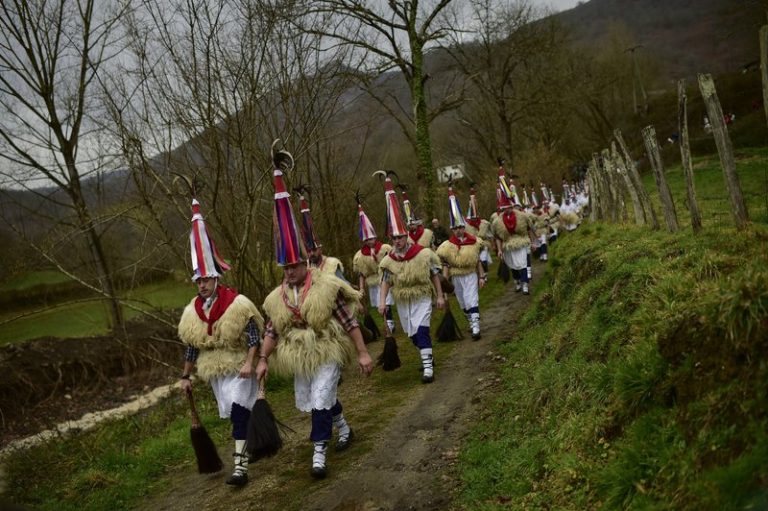
 In one of the most ancient carnival celebrations in Europe, dozens of people don sheepskins, lace petticoats and conical caps and sling cowbells across their lower backs as they parade to herald the advent of spring.In one of the most ancient carnival celebrations in Europe, dozens of people don sheepskins, lace petticoats and conical caps, sling cowbells across their backs and parade through two Spanish towns.
In one of the most ancient carnival celebrations in Europe, dozens of people don sheepskins, lace petticoats and conical caps and sling cowbells across their lower backs as they parade to herald the advent of spring.In one of the most ancient carnival celebrations in Europe, dozens of people don sheepskins, lace petticoats and conical caps, sling cowbells across their backs and parade through two Spanish towns.
The groups, named “Joaldunak,” after the Basque-language word for cowbells, march through the northern towns of Ituren and Zubieta to herald the advent of spring.
The annual procession stems from ceremonies held to ward off evil spirits and bless the harvests to come. The celebration, traditionally held at the end of January, is believed to date from before Roman times.The participants march along roads and mountain paths between the two towns, jingling their bells.












